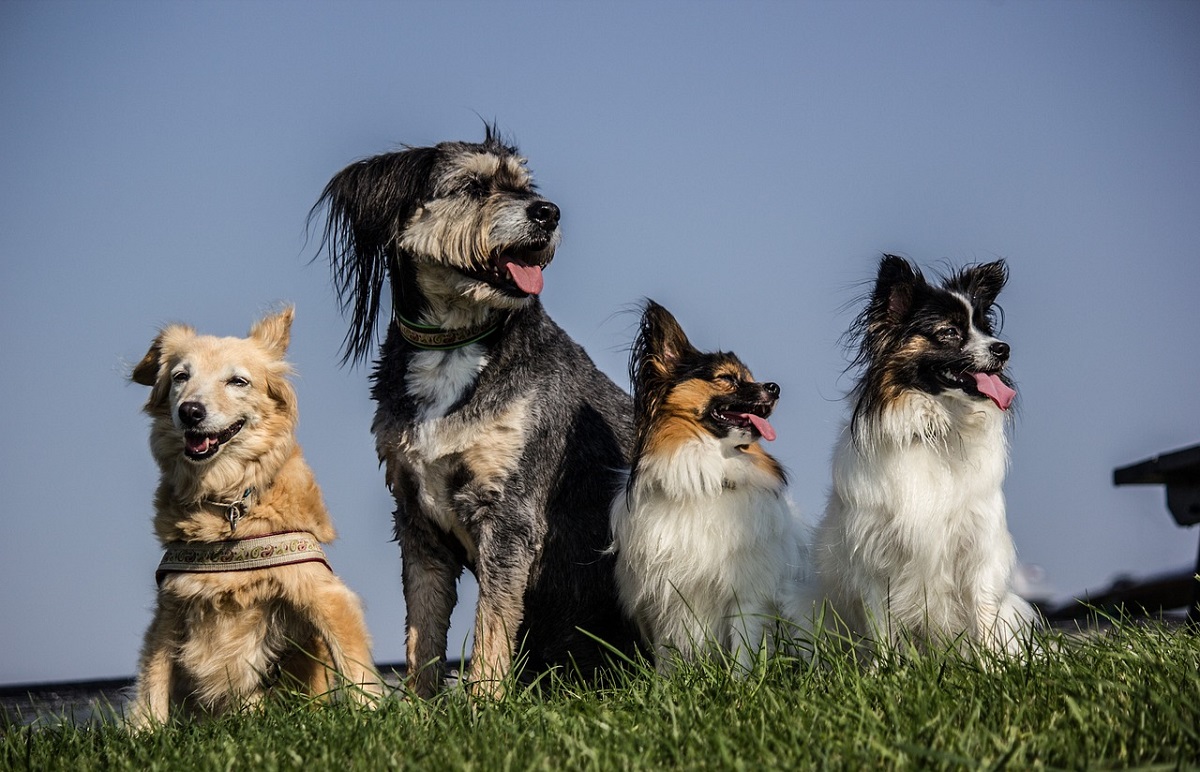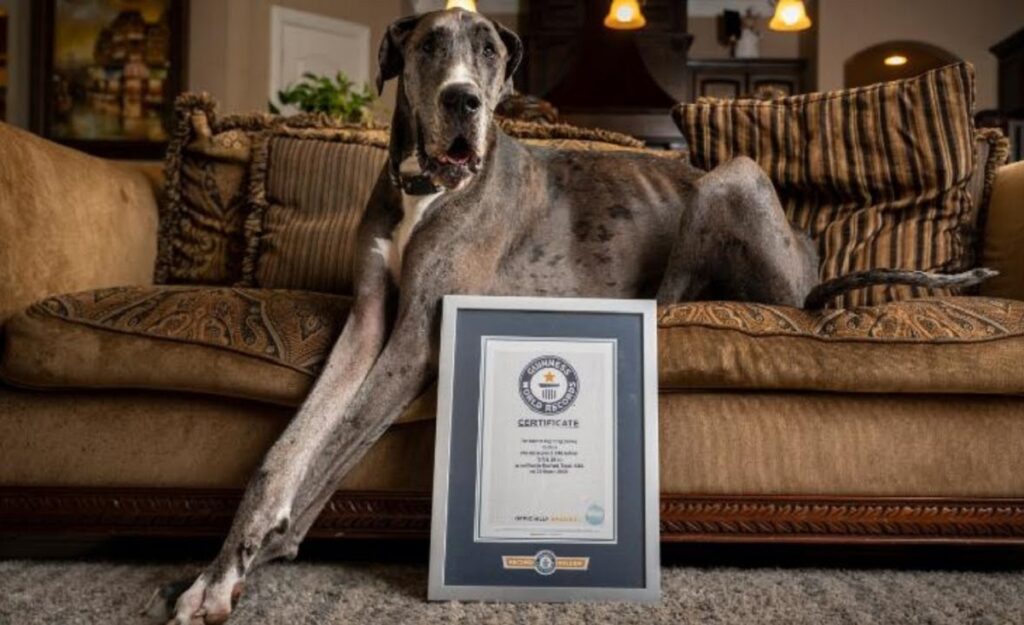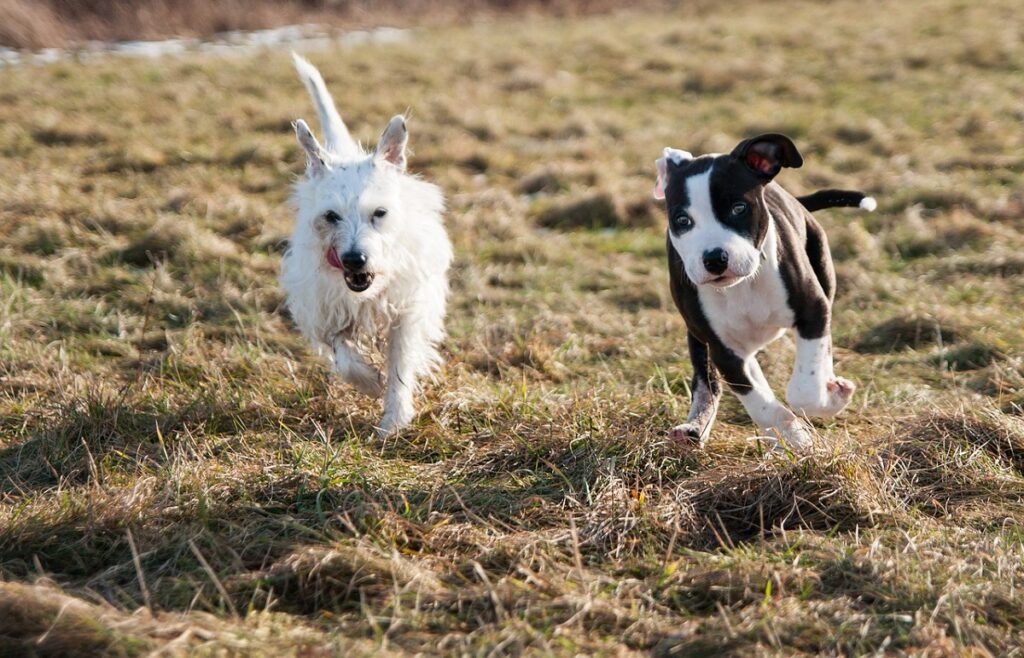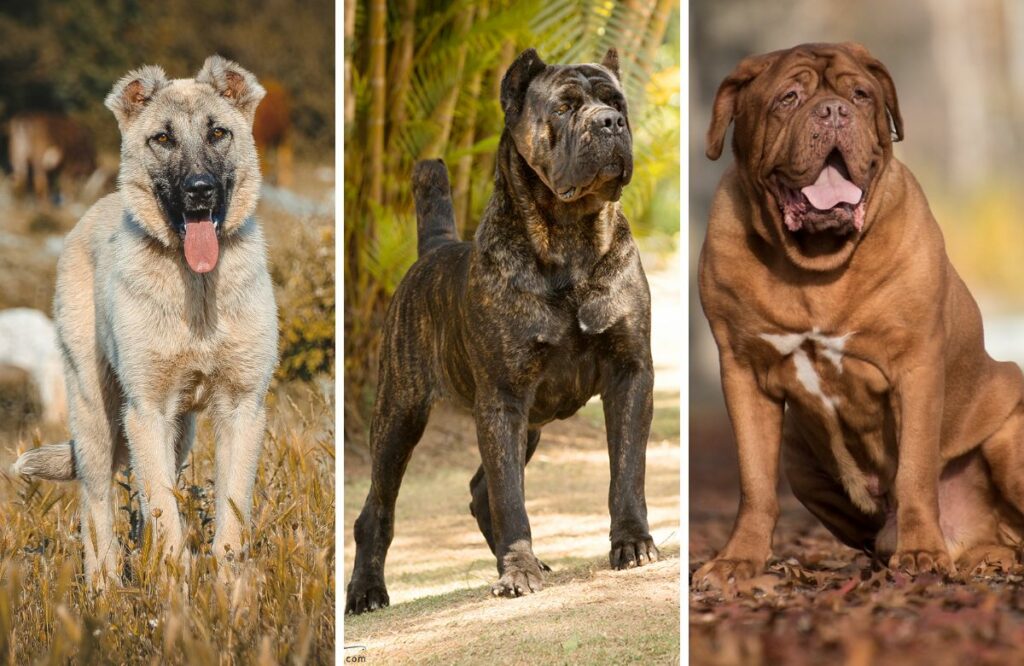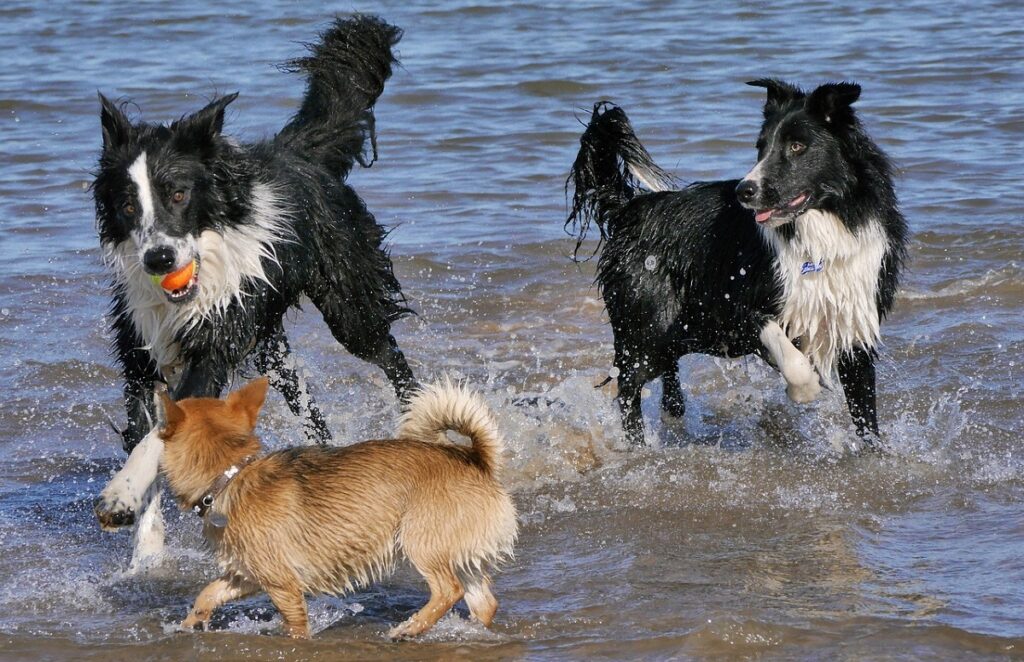Think you know everything about your furry best friend? Think again! Dive into the fascinating world of canine facts and uncover surprising secrets about man’s best companion. From hidden talents to quirky behaviors, we’ll unveil a paw-some collection of “must-know” dog trivia that will astound even the most devoted dog lover. Prepare to be amazed and deepen your bond with these incredible creatures. Get ready to have your mind blown – one wagging tail at a time!
I have a secret I want to share. I’m a dog person. I feel guilty admitting it, but here’s the thing… I’m also a cat person, an elephant person, and a whale person. I love all animals!
Dogs are more than family, companions, and best friends. They’re worthy of being understood and studied and carry mysteries we may never know the full extent of. What can we say about dogs that haven’t been said?
Some things you may have heard, other things we believe you haven’t. Dogs are an enigma or a thing that is mysterious, puzzling, or difficult to understand. Sure, we know most are loyal, protective, and playful, but they’re also independent and somewhat psychic.
We’d like to take you into a dog’s world – To a place where peace and happiness are just a nuzzle away.
10 Most Amazing Facts About Dogs
- Dogs are the most popular pet on the planet
- Zeus is the world’s tallest male dog,having height of 3 feet, and 5.18 inches
- Pearl the Chihuahua is the shortest dog ever measured at 3.59 inches
- Approximately 45% of dogs in the US share their owner’s bed
- Dogs have 300 million receptors in their nose
- Dogs have almost 1700 taste buds
- A dog’s nose print is unique, similar to a person’s fingerprint
- Greyhounds can outpace cheetahs in endurance races
- Dogs don’t sweat like humans do
- In 2022, the French Bulldog was named the most popular breed
Facts About Dogs
Let’s dive into a world of canine wonder with our captivating collection of dog facts.
Dogs Are the Most Faithful Animals That Show Unselfish Kindness Towards Others. (Nature)
Science Direct held a study in 2005 where they presented dogs with the scent of a stranger, the scent of food, and the scent of their owners. (Brain scans were measured throughout.)
The area of the brain associated with positive emotions lit up. The results were that the dogs reacted most strongly to their owners’ scent, and it was noted these feelings of loyalty could be associated with “love.” (source)
Zeus Is the World’s Tallest Male Dog, Measuring 3 Feet and 5.18 Inches in Height. (Guinness World Record)
Zeus is/was a two-year-old brown and gray American Great Dane. Not counting occasionally snatching food off counters, the gentle giant rarely got into trouble. (source)
Pearl the Chihuahua Holds the Record for the Shortest Dog Ever at 3.59 Inches Tall. (Guinness World Record)
The outgoing 2-year-old Chihuahua named Pearl is shorter than a popsicle stick and about the size/length of a dollar bill. She weighs 1.22 lbs. (source)
The Oldest Dog Ever Is 30+ Years Old. (Guinness World Record)
As of February 2023, Bobi was 30 years and 266 days old. He is/was a purebred Rafeiro do Alentejo, which is a Portuguese breed of livestock guard dog. (source)
There Are More Than 75 Million Pet Dogs in the US. (AVMA)
This statistic breaks down to 38.4% of households. This is over 48 million households. (source)
Approximately 45% of dogs in the US share their owner’s bed. (NCBI)
The guardians who don’t allow Snuggles in bed mention that hygiene is the reason why they don’t. (Administering flea prevention and parasitic treatments may resolve these issues.) Interestingly, percentages in different countries varied. (source)
70% of Individuals Include Their Dog’s Name on Their Holiday Cards. (NPR)
Guilty as charged. They certainly are family and so are included in those activities human beings experience. (source)
Dogs Have 300 Million Receptors in Their Nose. (Phoenix Vet Care)
They love their smells. Humans only have around 5-6 million different types of olfactory (smelling) receptors. In dogs:
- Dachshunds have 125 million
- German Shepherds have 225 million
- Bloodhounds have 300 million(!) (Most of all canines.) (source)
Dogs Have Almost 1,700 Taste Buds. (Science Direct)
Compared to humans, we have approximately 9,000. According to the American Kennel Club (AKC), dogs can identify sweet, sour, salty, and bitter tastes but also have unique taste buds for water. (source)
Fun Facts About Dogs
Now, let’s move along to more dog statistics that may make your ears perk up. So sit. And stay.
Dogs Are the Most Popular Pets on the Planet. (Pet Food Industry)
This was the statistic in 2016 in a survey by GfK – the largest German market research company – of 22 countries, showing dogs were owned by 33% of respondents and cats came in second at 23%. (Then there are fish, birds, and other pets, but that’s a different article.)
Although dogs are the most popular pets worldwide, Russia has the highest number (59%) of pet cats in the world. (source)
Dogs Have 18 Ear Muscles. (UCSB Science Line)
A dog’s ear canal is a lot longer than a human’s. This helps them discern sounds. (I’ve had a dog that realized someone was coming home, and I couldn’t even hear the car yet.) A dog’s cochlea, in the inner ear, makes 3 1/4 turns as compared to the 2 1/2 turns in a human’s. (source)
Dogs Have Roughly the Same Level of Intelligence as a 2-Year-Old Child. (APA.org)
Three types of dog intelligence:
- Instinctive
- Adaptive
- Working and obedience (source)
The top 3 most intelligent dogs are:
- Border collies
- Poodles (Surprise! They’re extremely smart. Don’t let that haircut fool you.)
- German shepherds (source)
Dogs Have a Sense of Time. (Discover Magazine)
Although it’s a bit up in the air, since we can’t ask a dog, there are certainly facts that point towards this. One person has a dog that knows when his daily walk is before its guardian even moves for the leash. Separation anxiety is also a telltale sign of a dog realizing how long he has been left alone. (source)
Dogs Can Feel Real Jealousy When They See You Showing Affection to Others. (Scientific American)
This hardly needs facts to back it up, and many dog owners have stories of jealous dogs. A study from the University of Auckland, published in “Psychological Science” proves it. (source)
Dogs Can See Blue and Yellow Colors. (VCA Animal Hospitals)
“Cones” in our retinas differentiate colors. Dogs have two types, which is called “dichromatic vision.” Humans have three cones and can identify combinations of blue, red, and green. (source)
Dogs Experience Separation Anxiety. (RSPCA)
You may have seen dogs that demolish a home or simply rip up toilet paper due to this malady. Here are a few other common behaviors:
- Destructive behavior
- Howling, barking, whining
- Eliminating inside
- Excessive excitement upon your return
- Signs of anxiety before you leave (source)
Interesting Facts About Dogs — Fascinating Dog Facts
From their incredible senses to their diverse breeds, explore the fascinating world of our furry companions.
A Dog’s Nose Print Is Unique, Similar to a Person’s Fingerprint. (NCBI)
Just like our fingerprints and a cat’s nose print are unique, so is a dog’s nose print. Dogs’ noses have an interlocking pattern of grooves and beads. (source)
Dogs Have the Ability To Sense Heat and Thermal Radiation With Their Noses. (Nature)
As with snakes, dogs are sensitive to thermal radiation. This is the result of an intensive and reliable study. (source)
Puppies and Senior Dogs Have More Frequent Dreams Than Adults. (USA Today)
Senior dogs dream all the time, and you can hear and see when they’re doing so. And the size of the dog matters. Larger dogs are said to have longer dreams, and smaller dogs have shorter ones.
Scientists think AI (Artificial Intelligence) will eventually help discover more details on this subject. (source)
Dogs Can “Catch” Yawns From Humans, As Yawning Is Contagious for Them As Well. (Scientific American)
This has been hypothesized since dogs have been proven to have empathy towards humans. In an experiment, the contagious yawning of dogs was even higher than in humans. Bet you’re yawning. (source)
Both Human and Dog Blood Pressure Tends To Decrease When a Person Pets a Dog. (NCBI)
When I hug a dog, it elicits an even greater response, feeling mentally and physically as if dopamine (the “feel good” neurotransmitter) is being released into my brain. In studies, dog guardians had lower blood pressure than those who didn’t have dogs. (source)
Facts About Dog Breeds
From the majestic to the minuscule, learn captivating tidbits about various dog breeds that make each one a true canine marvel.
In 2022, the French Bulldog Was Named the Most Popular Breed for the First Time. (AKC)
Previously, since 1991, the Labrador Retriever was in the top spot for the most popular dog breed list. In 2021, the French bulldog was in the number two position. Numbers 2-5 in 2022 were: Labrador retriever, golden retriever, German shepherd, and poodle. (source)
The Labrador Retriever Has Remained on the AKC’s Top 10 Most Popular Breeds List Longer Than Any Other Breed. (AKC)
This is probably because they’re friendly, active, and outgoing. Wonderful with children and other dogs, they’re often chosen as family dogs for their positive personalities.
Rin Tin Tin, the Famous German Shepherd, Was an Academy Award Nominee. (CBR)
He was born in 1918 and died in 1932 at the age of 14. Buried in France, today Rin Tin Tin’s bloodline carries on at a Texas kennel. (source)
The Dandie Dinmont Terrier Is Unique Among Dog Breeds as It Is Named After a Fictional Character. (Royal Canin)
According to Royal Canin, Dandie Dinmont was a farmer with a pack of such dogs in Sir Walter Scott’s novel Guy Mannering. These terriers are independent, highly intelligent, and sensitive companion dogs. (source)
The Basenji Are Not Entirely “Barkless”; They Are Known to Yodel. (Vedantu)
Due to their unusually shaped larynx, the basenji does make some strange sounds. They groom themselves like cats and have a tightly curled tail. (source)
Australian Shepherd, in Actuality, Belongs to America. (IPL)
The breed as we know it today, that is. It is thought to have come from Spain, then to Australia, and finally to America, where they named it “Australian Shepherd.” (source)
The Labrador Retriever Originally Hails From the Newfoundlands. (Labrador Training)
It was in the northerly region of Canada in the province of Newfoundland and Labrador. Called “The Lesser Newfoundland” or the “St. Johns Dog,” it’s accepted as the breed our Labs come from. (source)
Dalmatians Are Born Entirely White and Acquire Their Spots As They Grow Older. (WebMD)
These speedy dogs are natural protectors. They were carriage dogs and developed a love for horses. These horse-drawn carriages later became fire “trucks,” and the tradition of Dalmatians riding on them lives today. (source)
The Norwegian Lundehund Is the Only Breed Designed for Puffin Hunting. (Web MD)
Today, puffins are protected (thank goodness), so their job today is as a companion. They have extra paw pads, ears that fold shut, and extremely flexible shoulders. (source)
The Bloodhound’s Tracking Abilities Are Legally Recognized Due to Its Incredibly Accurate Sense of Smell. (PBS)
This “nose with a dog attached” is so good at what he does that its tracking results are admissible evidence in a court of law. They have ultrasensitive scent membranes, are quite vocal, and were recognized as a breed by the AKC in 1885. (source)
Cool Facts About Dogs
Unleash your curiosity as we delve into the captivating world of dogs, revealing the remarkable tales behind these canine companions.
Greyhounds Can Outpace Cheetahs in Endurance Races. (Australian Racing Greyhounds)
I could find no record/proof of an actual test of this scenario, but suffice it to say, they’re fast. At top speed, the greyhound can reach 45 mph and can outrun most dogs. (source)
Dogs Don’t Sweat Like Humans Do. (Texas University)
Dogs sweat in their own way. Heatstrokes are a threat to dogs since dogs rely heavily on panting and drooling to get rid of excess heat, and in some extreme cases, that’s just not an option. Dogs, covered in fur and without sweat glands on most of their bodies, cannot turn their sweat into vapor to cool down. So keep your pups cool and get them inside when temperatures escalate. (source)
Dogs Can Exhibit a Preference for Using Their Left or Right Paw, Just Like Humans. (Science Direct)
Researchers/Scientists have studied this at length by challenging adult dogs with tests. Placing tape or a blanket over its head, “shaking hands,” and getting food from a can or a toy are ways they’ve been tested. Many scientists believe lateralization has a connection to the dog’s breed and/or behavior. (source)
Dogs Also Have Extremely Keen Hearing. (Borrett Animal Hospital)
They not only hear better than humans, but they also communicate emotions with their ears.
A large number of breeds, around 30, are more susceptible to hearing loss and include Dalmations, Boston terriers, and German shepherds. (source)
Someone Who Hunts With a Beagle Is Referred to as a “Beagler.” (Dictionary)
Beagles are affectionate family companions. They’ve been bred as scent hounds for many generations. It’s instinctual, and an ideal guardian would use scent games to exercise their minds. (source)
Random Facts About Dogs – Weird Facts About Dogs
Prepare to be amazed by the curious and quirky world of canines as we unravel a collection of random and weird facts about dogs.
Dogs Evolved From Wolves. (National Geographic)
Strong behaviors that wolves and domesticated dogs share:
- Pack animal sense
- Meat-eaters
- Prey drive
- Instinctive play behaviors
- Dominant or submissive roles (source)
Dogs Kick Backward After Going to the Bathroom To Mark Their Territory. (Cesar’s Way)
Dogs have pheromone scent glands on their paws that are even more powerful than the smell of excrement. So kicking expels both scents to let other dogs know that area is theirs. Even the disturbed grass is a visual cue that it’s their territory. (source)
Chocolate Is Extremely Dangerous for Dogs. (McGill University)
You might think it’s okay to give your dog just a little bit of this sweet treat, but it’s one of the most dangerous foods to give them. Chocolate is toxic to dogs because it contains theobromine and caffeine. Humans metabolize them easily, but dogs don’t. (source)
Maltese Dogs Are Perfect for People With Allergies. (ASPCA)
They are considered to be hypoallergenic, like Poodles and Bichon Frises. (Please note: No dog is completely hypoallergenic. They all have dander.) Maltese dogs are also known to be picky eaters. They’re also known for being, um, selective eaters. (source)
To Express Feelings, Dogs Use Their Body Language. (National Geographic)
Having trained dogs, I’ve learned the fastest way to teach them is to use gestures or sign language. They don’t communicate like we do, so speaking commands sometimes isn’t helpful. You can create your own hand and body signals as long as you stay dedicated, repetitive (daily), and keep training periods brief. (source)
Around 30% of Dalmatians Are Deaf in One Ear. (UFAW)
About 5% of them are deaf in both ears. Keep both eyes on them since they’re more prone to accidents like getting hit by cars. (source)
If you have a deaf dog, click here if you want to learn about how to train a deaf dog.
Three Dogs Managed To Survive From the Titanic. (VetStreet)
According to VetStreet, three dogs lived out of around a dozen. This probably happened because they were smallish (easier to stow away on rescue boats) and were kept in their owners’ cabins (first class) instead of in the on-board kennel. (source)
Facts About Dogs for Kids
Did you know all dogs have three eyelids in each eye? They’re crucial for fighting eye infections, and they also protect the eye. Also, puppies are born deaf, and it’s not until they’re around 2-3 weeks old that their ear canals begin to open.
Dogs are whizzed at learning. They can learn more than 100 words/gestures since they’re so intelligent and obedient. But dogs look totally different, depending on the breed. Shar-Peis and Chow Chows have blackish tongues, which are just heavier pigmentation and are not dangerous to the dog.
So, how long have they been around? The oldest dog breed is the Saluki. With sleek, stunning looks, they were hunting dogs for kings for thousands of years. Dogs have been by our side for centuries and deserve only the best we can give them.
FAQs
What Do Dogs Look Like?
Dogs are the animals with the most unique characteristics breed to breed in the entire animal kingdom. A Chihuahua and a Great Dane look nothing alike, yet they’re both canines.
What Are 5 Facts About Dogs?
- They have four paws, each with five toes.
- Their ears can pick up higher frequencies like ultrasonic dog whistles (whistles dogs can hear from far away that humans can’t).
- They have sharp teeth made to tear meat more easily.
- They have a coat of hair (Even hairless dogs have some hair or “peach fuzz” on their bodies).
- Their sense of smell seems to defy what’s even possible.
Why Are Dogs So Popular?
There is no other animal in the world that can return love the way dogs do through their body language and actions.
How Many Dogs Are in the World?
There are around 900 million dogs in the world. This includes feral dogs as well as pets.
Conclusion
So, dogs are great for companionship? Check. Man’s best friend? Check. There are assistance dogs, rescue dogs, emotional support dogs, farming dogs, and dogs who sniff for drugs, explosives, cadavers, and live people.
I don’t completely trust anyone who doesn’t like dogs. In fact, one of my dogs reacted harshly towards an ex-boyfriend of mine. (I ended up with the dog and not the boyfriend!)
Without them, we wouldn’t laugh or cry as hard. We wouldn’t know unconditional love in quite the way they show it. We wouldn’t be the same.
Dogs are a gift. We don’t deserve them but thank goodness we have them. Now go get Junior a puppy treat if you’re a dog person!
Dogs, our beloved companions, constantly surprise us. From their capacity to understand human emotions to their unique nose prints akin to our fingerprints, there’s always something new to discover. Their ancestry connects them to wolves, yet they’ve evolved into highly social creatures with diverse breeds sporting an array of talents. Understanding these fascinating facts deepens the human-canine bond, making us appreciate our furry friends even more. So, the next time your dog tilts their head or chases their tail, remember there’s likely a fascinating explanation behind the behavior.

